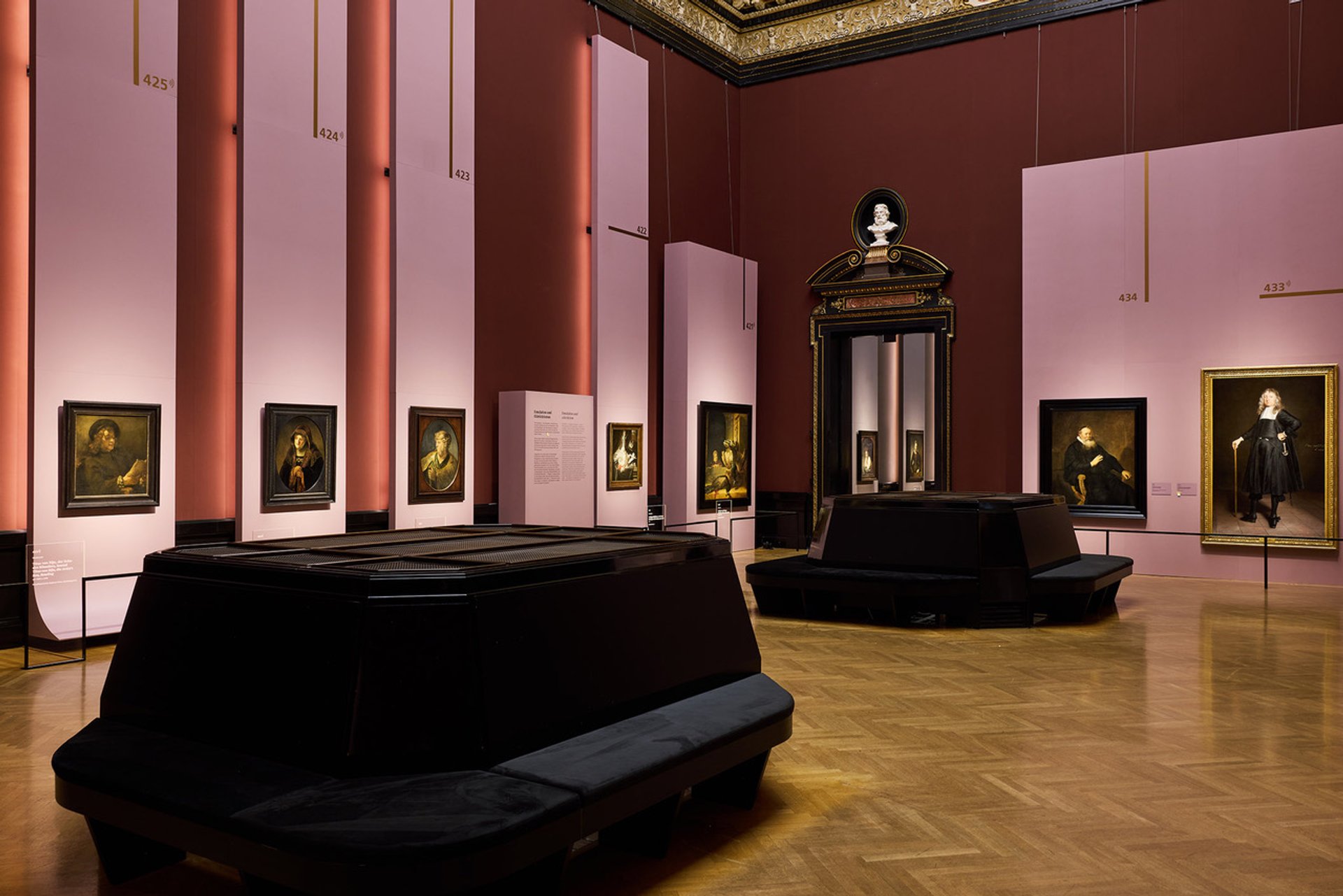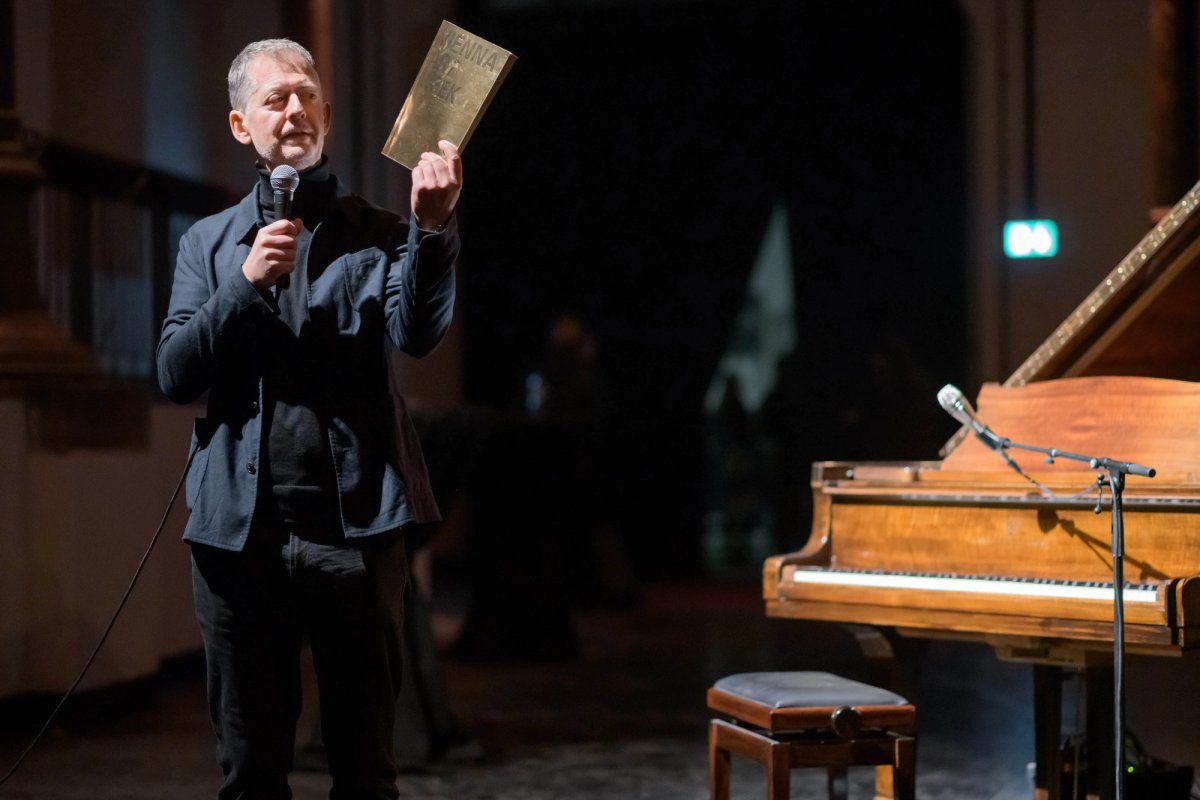As Vienna Art Week celebrates its 20th anniversary, its artistic director, Robert Punkenhofer, confessed to us that he had slept through its opening party in 2006. He had invited 200 VIPs to a reception in his private apartment. As they celebrated with sparkling wine, he was fast asleep in the adjacent room.
The guests were discreetly told, and two of them were allowed to peek around the door to confirm this, seeing him lying on a sofa. Gossiping among themselves, they concluded that organising the world’s first “art week” must have been extremely exhausting: it had all been too much for Robert.
The VIPs did not know it, but Punkenhofer’s slumber was actually a work of performance art by the Austrian performance artist Oliver Hangl, who had been commissioned to create an event. Hangl then asked Punkenhofer if he would accept being given a strong sleeping pill. Hardly feeling he could refuse, Punkenhofer accepted—and really did sleep soundly through the party.
He awoke the following morning with absolutely no memories of the gala. In the spirit of Hangl’s extraordinary inventiveness, the VIP audience remained unaware that they were experiencing a work of art. In a sense, it was a private event for both Hangl and Punkenhofer.

Rembrandt – Hoogstraten: Colour and Illusion is at Vienna's Kunsthistorisches Museum until 12 January 2025 Kunsthistorisches Museum, Vienna
Last Friday, at the opening celebration for the 20th Vienna Art Week (8-15 November), Punkenhofer was very much in command, as the master of ceremonies. This week 30,000 people are expected to have participated in more than 100 events in what is now Austria’s art highlight of the year. Since 2005, its aim has remained the same: as a platform for the Viennese art scene, sharing its artistic content with the public free of charge.
Last weekend 50 artists’ studios were opened up, giving visitors an unusual opportunity to see a wide range of contemporary art. This week continues with other events, ranging from tours of museum exhibitions to talks. Every year there is a theme, and for the anniversary it is, appropriately, “Facing Time”.
Among the most interesting new museum exhibitions in Vienna is Rembrandt-Hoogstraten: Colour and Illusion at the Kunsthistorisches Museum (until 12 January 2025), with the master’s work shown alongside that of his most intriguing pupil. Rudolf Wacker: Magic and Abysses of Reality, at the Leopold Museum (until 16 February 2025), is a major retrospective of a little known, but important, early 20th-century Austrian artist of the New Objectivity movement. And do not miss Gauguin Unexpected (until 19 January 2025) at the Kunstforum Wien (one of the very few major institutions not part of Vienna Art Week).
Vienna Art Week is run by a cluster of 23 institutions, primarily the main art museums, plus the Dorotheum auction house. A group photograph of their leaders taken this year is very telling: of the 20 who were in Vienna that day, 15 are female, probably the reverse of what it would have been when Art Week was founded.
Two of Vienna’s three leading art museums (and members of the “cluster”) are to get new bosses on 1 January 2025, so change is in the air. At the Kunsthistorisches Museum, Sabine Haag, who has been the director since 2009, is handing over to the American art historian Jonathan Fine. He is currently the head of the Weltmuseum, one of its three constituent institutions.
Klaus Albrecht Schröder will be stepping down as director of the Albertina, a role he has held since 1999. During the past quarter-century he has dramatically changed the Albertina’s role, from a collection of prints and drawings with few visitors to a much wider art museum now attracting 1.2 million people. He will he handing over to Ralph Gleis, currently the director of Berlin’s Alte Nationalgalerie. This will leave Stella Rollig, the director of the Belvedere since 2017, as the only Austrian heading the country’s three most-visited art museums.
Vienna Art Week has also had a wider impact on the city’s art market, indirectly sparking off numerous art fairs. The two most important are Art&Antique Hofburg (7-11 November), which coincides with Vienna Art Week, and Vienna Contemporary two months earlier (11-14 September). But there are nearly ten smaller fairs, which is far too many; they attract neither enough dealers nor visitors. Schröder is outspoken in his criticism: “We have too many players in too small a market.”
Vienna claims the title as hosting the world’s first “art week”. There was a slightly earlier “fortnight” in London, but it was an initiative by dealers. What makes Vienna special is that it is primarily run by museums, although attracting buying collectors also remains important. Only 30% of the turnover of the Austrian art trade is with locals, so dealers and auctioneers are highly dependent on international buyers.
Leading the way
Where Vienna led, others have followed. Punkenhofer says there are now more than 30 city “art weeks” or “weekends”. These are among the most important in Europe (with their year of establishment and next year’s dates): Amsterdam, 2011 (21-25 May 2025); Berlin, 2012 (10-14 September 2025); Stockholm, 2013 (13-18 May 2025); Antwerp, 2014 (29 May-1 June 2025); Barcelona, 2015 (18-21 September 2025); Zurich, 2018 (13-15 June 2025); Lisbon, 2019 (dates not yet announced); Prague, 2021 (25-28 September 2025); and London, 2021 (6-8 June 2025). Next year Vienna’s will be from 7-14 November 2025.
On Thursday 14 November, Vienna Art Week will formally launch its anniversary book, published with its signature golden cover. Gold was chosen for publicity 20 years ago, to reflect the city’s Baroque splendour, Art Nouveau, the Secessionist building’s dome and Klimt. Some have criticised gold as being too conservative or tied to money, suggesting that something much more colourful and contemporary would be appropriate. But golden publicity material has effectively become Vienna Art Week’s visual “trademark”.
At Thursday’s launch of the book, a panel discussion is to include Hangl. Perhaps the performance artist could be encouraged to reveal more about why and what happened when he put Punkenhofer to sleep during the 2006 VIP party?
• Vienna Art Week, until 15 November
• Rembrandt-Hoogstraten: Colour and Illusion, Kunsthistorisches Museum. Vienna, until 12 January 2025
• Rudolf Wacker: Magic and Abysses of Reality, Leopold Museum, Vienna, until 16 February 2025
• Gauguin Unexpected, Kunstforum, until 19 January 2025



